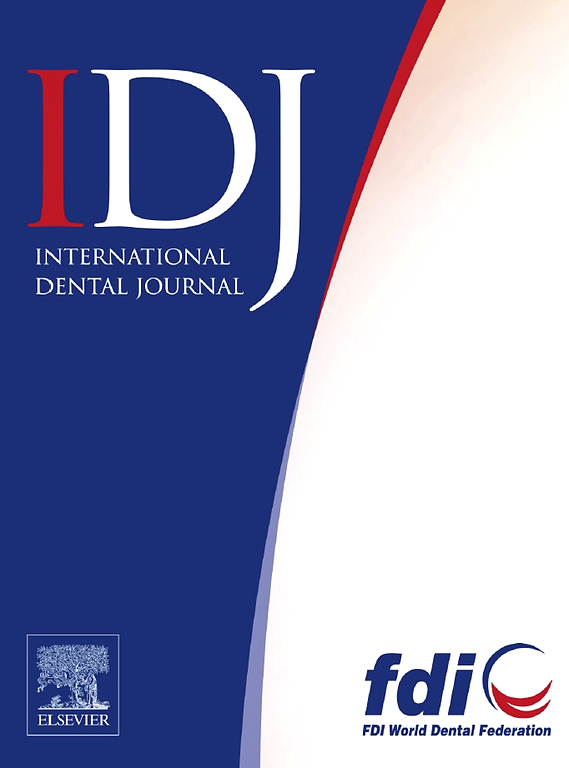四种生物陶瓷密封剂对小鼠骨髓细胞的细胞毒性和破骨细胞生成的体外比较。
IF 3.7
3区 医学
Q1 DENTISTRY, ORAL SURGERY & MEDICINE
引用次数: 0
摘要
简介和目的:根管封闭剂在根管治疗中是必不可少的,但其化学成分扩散到根尖周组织中可能引发破骨细胞活化和骨吸收。本研究旨在评价4种硅酸钙基生物陶瓷封口剂(C-root SP、iMTA SP、iRoot SP和NeoSEALER Flo)的pH值及其对破骨细胞前体细胞活力的影响,并进一步探讨其对核因子κ b配体受体激活剂(RANKL)诱导的体外破骨细胞生成的调节作用。方法:测定封口剂提取物的pH值后,使用细胞计数试剂盒-8 (CCK-8)法定量评估封口剂处理后的细胞活力,同时采用抗酒石酸酸性磷酸酶(TRAP)染色和phalloidin染色分别评估rankl诱导的破骨细胞形成和纤维肌动蛋白(F-actin)环形成。通过实时荧光定量PCR (qPCR)和Western blot检测破骨细胞相关基因和蛋白的表达模式。结果:所有封口剂提取物均呈碱性。低浓度sealer提取物对细胞活力无显著影响,而高浓度提取物(50 mg/mL)表现出时间依赖性的细胞毒性作用。值得注意的是,所有测试的封口剂都表现出对破骨细胞分化的抑制作用,其中NeoSEALER Flo表现出最有效的抑制作用。这可以通过trap阳性多核细胞的形成减少、f -肌动蛋白环组织的破坏以及破骨细胞相关基因和蛋白质表达的协同下调来证明。结论:在低浓度下,所有的封口剂均无明显的细胞毒性,并对破骨细胞的形成和功能有不同程度的抑制作用。其中,NeoSEALER Flo提取物对破骨细胞的抑制作用最强。临床意义:NeoSEALER Flo是一种基于硅酸钙的生物陶瓷密封剂,有效地降低细胞毒性,同时抑制破骨细胞的形成和活性。这表明它可以有效地防止根尖周炎的根尖周组织破坏和促进骨愈合,突出了它作为根管封闭材料的潜力。本文章由计算机程序翻译,如有差异,请以英文原文为准。
In vitro Comparison of Cytotoxicity and Osteoclastogenesis of Four Bioceramic Sealers in Murine Bone Marrow Cells
Introduction and aims
Root canal sealers are indispensable in endodontic therapy, but the diffusion of their chemical components into periapical tissues may trigger osteoclast activation and bone resorption. This study aims to evaluate the pH values of 4 calcium silicate-based bioceramic sealers (C-root SP, iMTA SP, iRoot SP and NeoSEALER Flo) and their effects on the cell viability of osteoclast precursor cells, while further exploring their regulatory roles in receptor activator of nuclear factor kappa-B ligand (RANKL)-induced osteoclastogenesis in vitro.
Methods
After pH measurement of sealer extracts, the cell viability following sealer treatment was quantitatively assessed using the Cell Counting Kit-8 (CCK-8) assay, while tartrate-resistant acid phosphatase (TRAP) staining and phalloidin staining were employed to evaluate RANKL-induced osteoclast formation and fibrous actin (F-actin) ring formation, respectively. Furthermore, quantitative real-time PCR (qPCR) and Western blot analyses were conducted to examine the expression patterns of osteoclast-related genes and proteins.
Results
All sealer extracts exhibited alkaline properties. Low-concentration sealer extracts exhibited no significant impact on cell viability, whereas high-concentration extracts (50 mg/mL) displayed time-dependent cytotoxic effects. Notably, all tested sealers exhibited inhibitory effects on osteoclast differentiation, with NeoSEALER Flo demonstrating the most potent suppression. This was evidenced by a reduction in the formation of TRAP-positive multinucleated cells, disruption of F-actin ring organisation, and a coordinated downregulation of osteoclast-related gene and protein expression.
Conclusion
All tested sealers showed no obvious cytotoxicity at low concentrations and exhibited varying degrees of inhibitory effects on osteoclast formation and function. Among them, NeoSEALER Flo extracts showed the strongest inhibitory effect on osteoclasts.
Clinical Relevance
NeoSEALER Flo, a calcium silicate-based bioceramic sealer, effectively minimises cytotoxicity while inhibiting osteoclast formation and activity. This suggests that it may effectively prevent periapical tissue destruction and promote bone healing in apical periodontitis, highlighting its promising potential as a root canal obturation material.
求助全文
通过发布文献求助,成功后即可免费获取论文全文。
去求助
来源期刊

International dental journal
医学-牙科与口腔外科
CiteScore
4.80
自引率
6.10%
发文量
159
审稿时长
63 days
期刊介绍:
The International Dental Journal features peer-reviewed, scientific articles relevant to international oral health issues, as well as practical, informative articles aimed at clinicians.
 求助内容:
求助内容: 应助结果提醒方式:
应助结果提醒方式:


